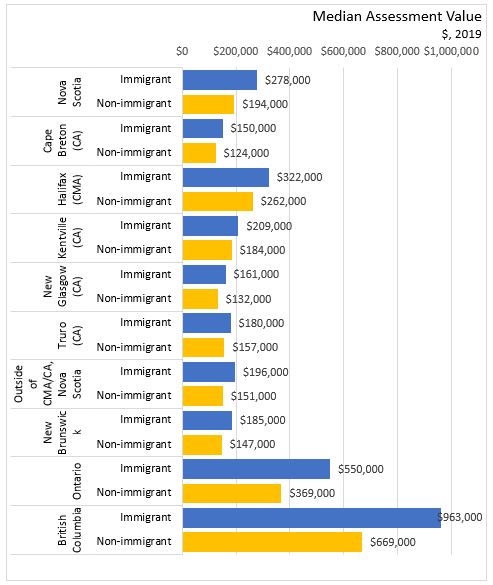The Economics and Statistics Division maintains archives of previous publications for accountability purposes, but makes no updates to keep these documents current with the latest data revisions from Statistics Canada. As a result, information in older documents may not be accurate. Please exercise caution when referring to older documents. For the latest information and historical data, please contact the individual listed to the right.
<--- Return to Archive
For additional information relating to this article, please contact:
March 18, 2021CANADIAN HOUSING STATISTICS PROGRAM, 2019 Statistics Canada has released further data on residential property owners in Nova Scotia, New Brunswick, Ontario and British Columbia as part of the Canadian Housing Statistics Program (CHSP). Today's release focuses on homeowner characteristics including age, sex, family type, immigration status and income.
Canadians under the age of 35 are less likely to be homeowners. In Nova Scotia persons under 35 own 9.4% of homes with 36.5% owned by persons aged 35 to 54 years old and 54.1% by those aged 55 and over. Similar patterns are seen in other provinces but there are higher shares of homeownership for persons under 35 in New Brunswick (11%), Ontario (11.4%) and British Columbia (10.4%). Within Nova Scotia, persons under 35 account for a larger share of homeowners in Halifax (11.2%) and a smaller share in areas outside Census metropolitan areas (CMA) and Census Agglomerations (CAs). In Toronto and Vancouver, young homeowners tended to live outside the core of the CMA. For Nova Scotia, the median assessment value for properties of homeowners under 35 was $199,000, below $221,000 for those aged 35 to 54 years old but higher than $183,000 for those aged 55 and over.

Lone-parent families account for the smallest share of home ownership in all provinces. Couple families, particularly those with children, in general owned higher-valued properties in 2019.
Immigrants account for around one-third of homeowners in Ontario and British Columbia, 6.2% in Nova Scotia, and 4.1% in New Brunswick. The share of immigrant homeowners in each province is similar to the share of immigrants in the overall population. Median home assessment values of immigrants generally exceed those of non-immigrants. In Nova Scotia, the difference in median value is $84,000 less than in Ontario ($181,000) and British Columbia ($294,000) and higher than in New Brunswick ($38,000). The largest difference in median assessment value between immigrant and non-immigrant in Nova Scotia was in the Halifax area. Toronto was an exception to this with non-immigrant median assessment values being higher.

Multiple-property ownership was more prevalent in Nova Scotia (23.4% of homeowners) than New Brunswick (20.3%), British Columbia (15.6%), and Ontario (15.5%). There was no major difference in median income between single- and multiple-property owners in Nova Scotia and New Brunswick.
Source:
Statistics Canada. Table 46-10-0030-01 Ownership type of residential property owners by residency status and number of properties owned
<--- Return to Archive